This site is part of various affiliate programs. Links may give us a small compensation for any purchases you make, at no additional cost to you. Please read the disclaimer policy for full details.
Sandisk memory cards are known as the best in the business, and are what I have used in my photography business for over 10 years.
But the differences between the various models of Sandisk cards are not obvious, with some much more suited for photography that others.
You don’t want to waste money on an SD card that doesn’t perform well, so in this article I will cover the results of real-world tests, comparing the Sandisk Extreme vs Extreme Pro read and write speeds, so you can be assured of which card is right for you.
At a glance, the Sandisk Extreme and Extreme Pro feature:
- Max capacity of 1TB in the Extreme Pro and 256GB in the Extreme.
- Same durability and resistance to shocks, water and x-rays.
- Both conform to UHS-1, V30, Class 10 and U3 speed classes.
- The Sandisk Extreme Pro has around a 10% faster write speed in the real world, and around a 15% faster read speed than the Sandisk Extreme SD card.
Sandisk Extreme vs Extreme Pro: Quick Comparison
Compare both models of SD card, then let’s take a more detailed look at each to see where the differences come from.
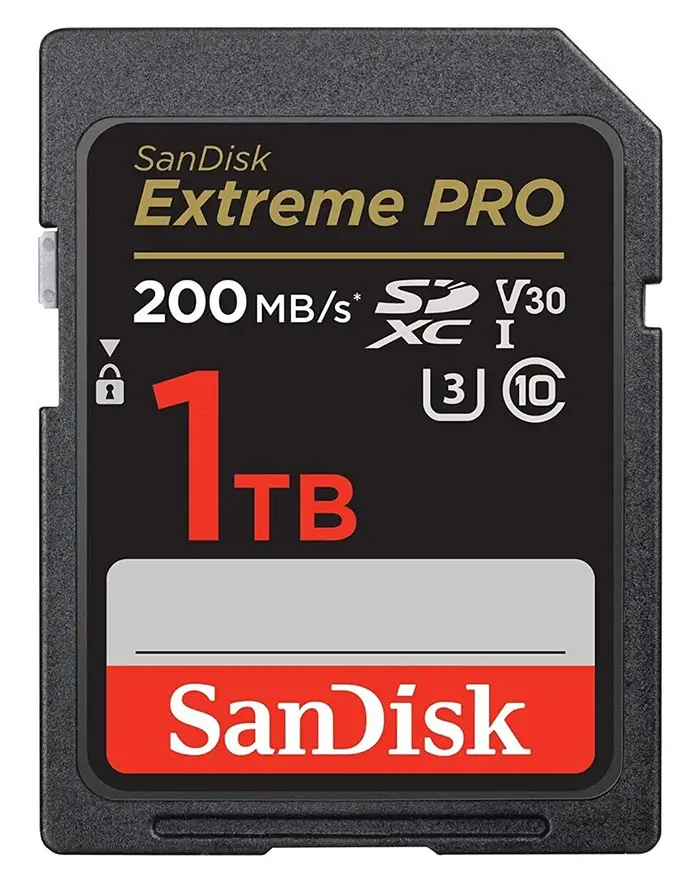 |
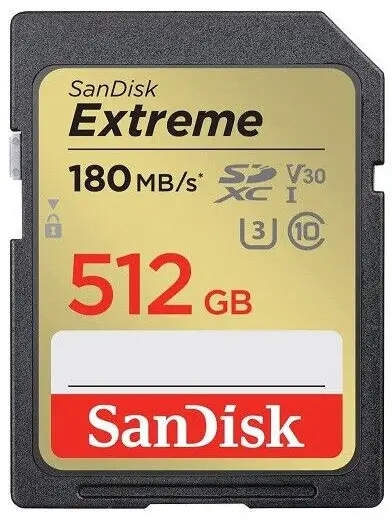 |
|
| Capacity: | Up to 1TB | Up to 256GB |
|---|---|---|
| Card Type: | SDXC | SDXC |
| Bus Type: | UHS-I | UHS-I |
| UHS Speed Class: | U3 | U3 |
| Speed Class: | Class 10 | Class 10 |
| Video Class: | V30 – Suitable for 4k | V30 – Suitable for 4k |
| Quoted Max Write Speed: | 90MB/s | 70MB/s |
| Sequential Write Speed: |
98.6MB/s in real world testing |
89.1MB/s in real world testing |
| Quoted Max Read Speed: | 170MB/s | 150MB/s |
| Sequential Read Speed: |
176.0MB/s in real world testing |
153.0MB/s in real world testing |
Sandisk SD Cards: The Details
Let’s take a look into the details of each memory card.
Sandisk Extreme
The Sandisk Extreme card has one of the best price to performance ratios of any SD card, which probably explains why it is so well loved by photographers. Although it remains about 10% slower than the Extreme Pro, the Sandisk Extreme read write speed is still sufficient for most hobby-level cameras in real world tests.
In fact, many older cameras prefer the lower speed interface of the Extreme over the Extreme Pro, so if you have an older camera that cannot cope with the faster read write speeds of the Extreme Pro though, then the Extreme is ideal. Check your camera manual to determine the fastest speeds that it will support.
This is now an older model of memory card, but the advantage of that is that we know these cards have been thoroughly tested in the field, and they work for long periods of time without failures. I have an Extreme card that is still working fine, nearly a decade after purchase. When you buy a Sandisk Extreme card, you know that you are buying quality.
- Pros:
- Max Sequential Write Speed: 89.1 MB/s in real world testing
- Max Sequential Read Speed: 153.0 MB/s in real world testing
- Very strong performance to price ratio
- Cheaper than the Extreme Pro
- Well-loved by photographers
- Lifetime warranty in the US
- Cons:
- Performance lags slightly compared to the Extreme
- Only 256GB max capacity
Sandisk Extreme Pro
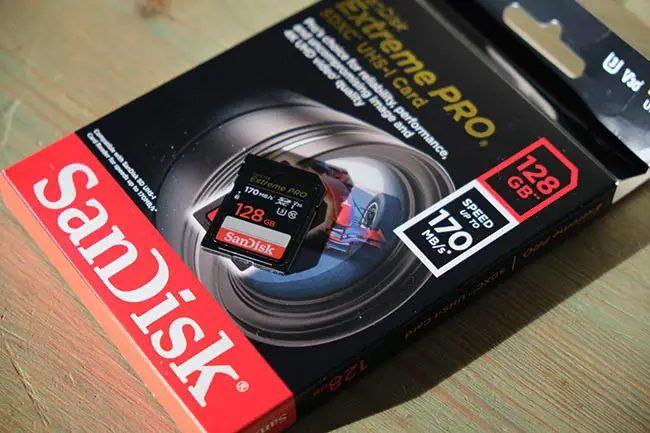
The Extreme Pro is currently the best Sandisk SD card or microSD card that you can buy, with souped up read and write speeds when compared with the Extreme, or any of the other models.
This is the SD card that I use, and I have never had a reason to wish for another card – it has always performed exceptionally well.
This card can easily handle 4K video recording, along with large bursts of photos, taking the longest of any memory card tested to fill the camera’s buffer, which is the point at which performance drops dramatically.
When combined with the card being available in capacities up to 1TB, and a lifetime warranty in the US, this becomes excellent value for money if you care about your photography.
You should carefully check your camera manual though, as older cameras are unlikely to get the full benefits of this card. They will still work, but at a slower speed. In this case, you may be better off buying the Sandisk Extreme, unless you plan to upgrade your camera soon.
- Pros:
- Max Sequential Write Speed: 98.6 MB/s in real world testing
- Max Sequential Read Speed: 176.0 MB/s in real world testing
- Capacity up to 1TB
- Perfect for 4K video recording
- Lifetime warranty in the US
- Free download of rescue software to recover deleted images
- Cons:
- You won’t see any speed benefits with some older cameras – check your camera manuals
Sandisk Extreme vs Extreme Pro: Real-World Comparison
You can see that the main difference between the Extreme and Extreme Pro is in the read and write speeds.
But what difference does this make in practice?
As with any piece of technology, you should take a manufacturer’s stated speeds with a pinch of salt. The tests to determine both read and write speed are performed under specified lab conditions that do not accurately represent your real-world use.
So I have made my own comparison with a Canon 6D and an Extreme and Extreme Pro card.
Write Speed / Number of Shots
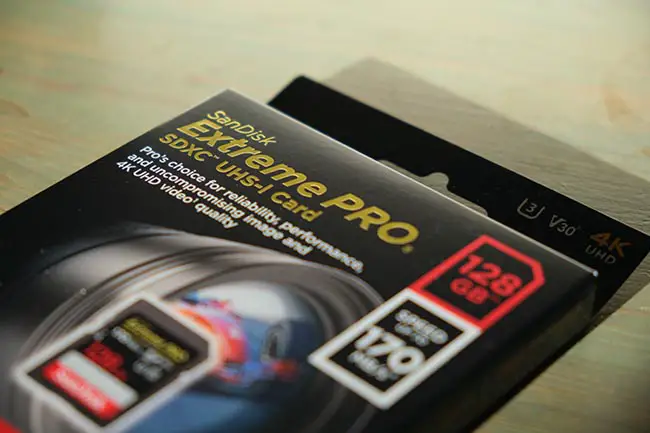
You do not see write speeds quoted on the front of memory cards. The number you do see quoted is the read speed, which is always faster than the write speed.
The maximum sequential write speed for the Sandisk Extreme in real-world testing is 89.1MB/s. The Sandisk Extreme Pro has a max sequential real-world write speed of 98.6MB/s, which is about 10% higher.
There is not a huge difference in write speed between the Extreme and Extreme Pro, but this difference will matter if you take a burst of photos, such as for sports or wildlife photography.
A higher write speed means that you are able to maintain your burst of photos for longer. Eventually, your camera buffer will fill up and you will have to stop taking photos, but this will take longer to happen with the Extreme Pro versus the Extreme.
Read Speed / Transfer Speed
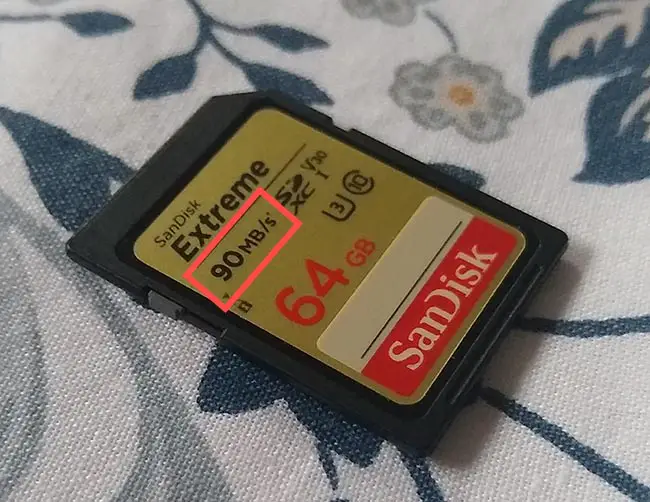
Read speed does not make a difference when you are taking your photos, but is relevant when you want to transfer your photos onto your computer.
Essentially, the faster the read speed, the faster you can transfer your photos.
The maximum sequential read speed in real-world testing for the Sandisk Extreme is 153.0MB/s, while for the Sandisk Extreme Pro, the read speed is 176.0MB/s, about 15% faster.
If you are only transferring a small number of photos, the difference in transfer times between the two cards will be measured in single-digit seconds, but if you are regularly transferring several GB’s of photos or 4K video files, then the Extreme Pro can save you a few minutes of time, and can be well worth the upgrade.
SD Card Symbols: What Do They Mean?
Each SD card has a range of symbols, and it is not obvious what they mean, or whether they are even relevant.
Card Type: SDXC
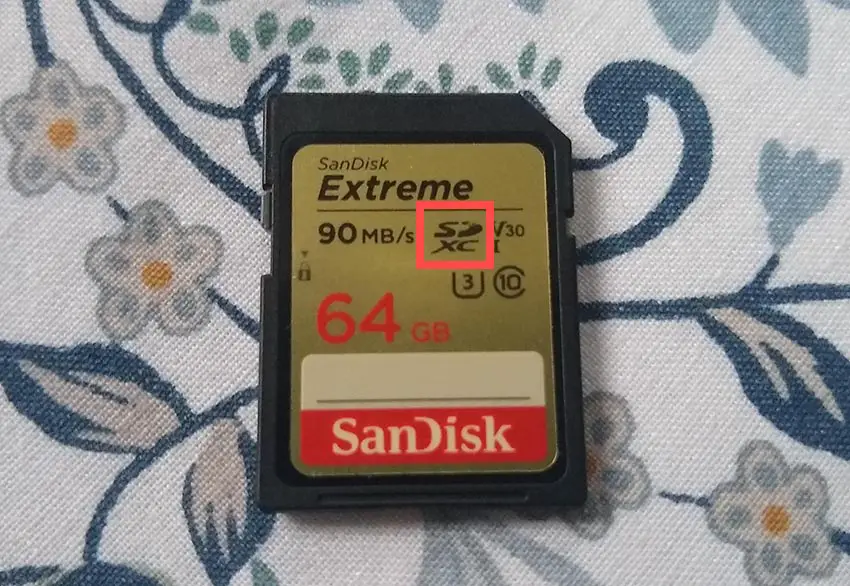
SDXC refers to the internal data architecture of the card, with SDXC cards in the capacity range of 32GB to 2TB. Smaller capacity cards (below 32GB) from the same model would be SDHC.
This means that card type refers only to the theoretical capacity of a card, and so can be safely ignored in favor of actual capacity.
Bus Type: I
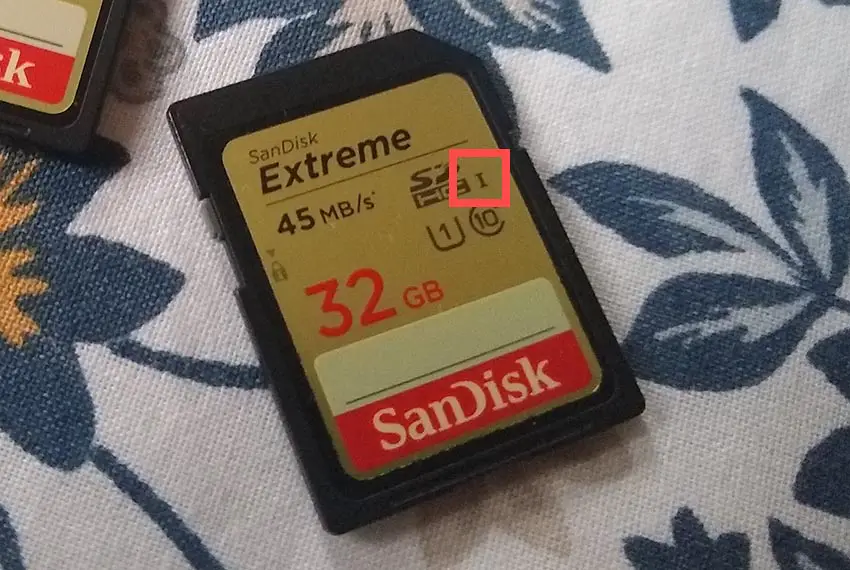
Bus type refers to the theoretical maximum read and write speeds for the card, which for these two is UHS-I.
Although UHS-II cards are now available, they are prohibitively expensive (5x the price of the UHS-I cards), and they require cameras that support the extra number of pins in these cards, otherwise they operate at UHS-I speeds.
UHS-I cards support a read and write speed of between 50 – 104 MB/s.
This theoretical figure can ignored in favor of the actual read and write speeds of the card.
UHS Speed Class: U3
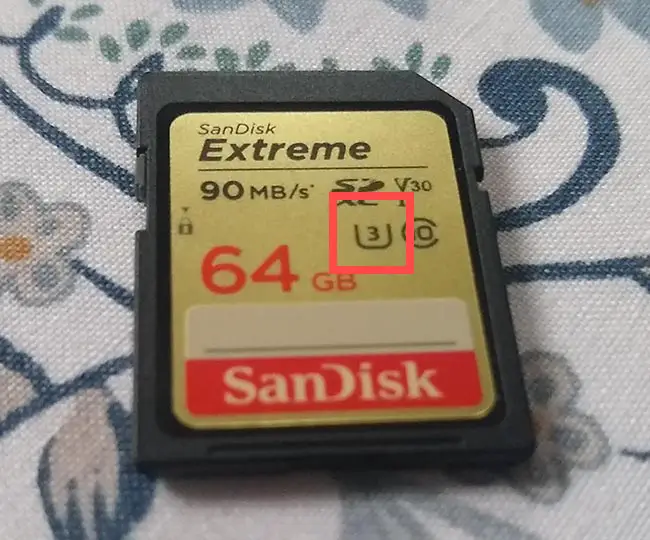
UHS speed class refers to the theoretical minimum write speed, and is denoted by a number inside a U. It is a more detailed version of the bus type, and can be useful to categorize SD cards. U3 cards have a minium write speed of 30MB/s.
| Minimum Sequential Writing Speed | UHS Speed Class |
| 10MB/s |  |
| 30MB/s |  |
Read More:
Video Class: V30
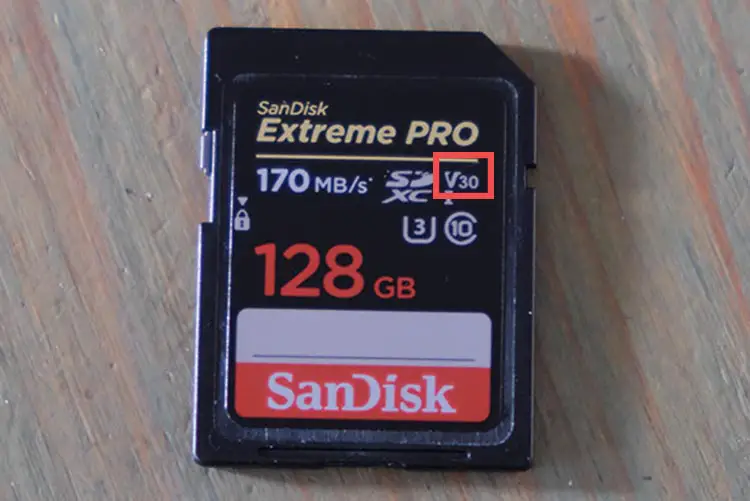
Video class is a measure of minimum write speed that relates to recording video rather than photos. This states the minimum speed that a card can support continuous video recording without buffering. V30 is more than suitable for 4K video, and can in fact support up to 8K video recording.
| Minimum Sequential Writing Speed | Video Class | Supports Up to: |
| 6MB/s |  |
4K video |
| 10MB/s |  |
4K Video |
| 30MB/s |  |
8K Video |
| 60MB/s |  |
8K Video |
| 90MB/s |  |
8K Video |
Speed Class: 10
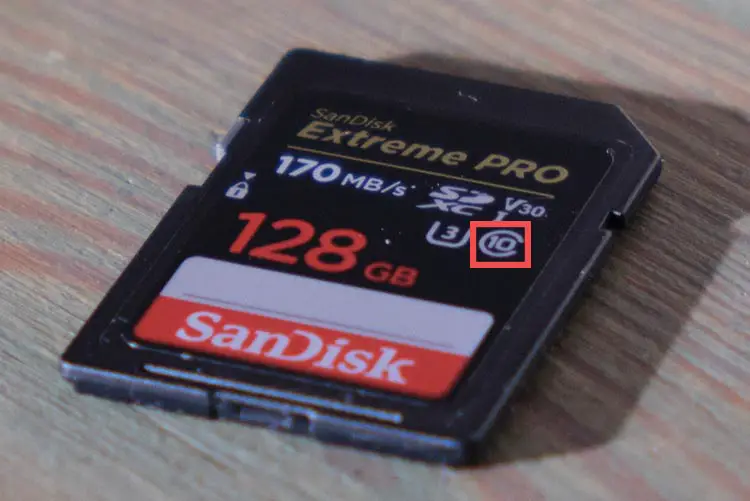
Speed class, the number inside a C, is an older measure also related to minimum write speed. Class 10 is the highest rating possible for this metric, and means that the minimum write sped is at least 10MB/s.
Pretty much every SD card made nowadays will exceed this write speed, meaning that speed class is effectively useless, and you are better off looking at the UHS speed class or video class.
Durability
Every SD card is built to the same standards, meaning that they are all waterproof, shock proof and x-ray proof.
There are no real differences in durability between SD cards.
Some have added protection to the outer cases to prevent being broken when stepped on, but this is not really a useful feature for a card that is going to spend most of its life inside your camera.
Which Memory Card Specifications Should You Care About?
You can see that most of the specifications for a memory card either do not matter in practice, or are simply another way of repeating the same information.
So which SD card specifications do matter?
Capacity
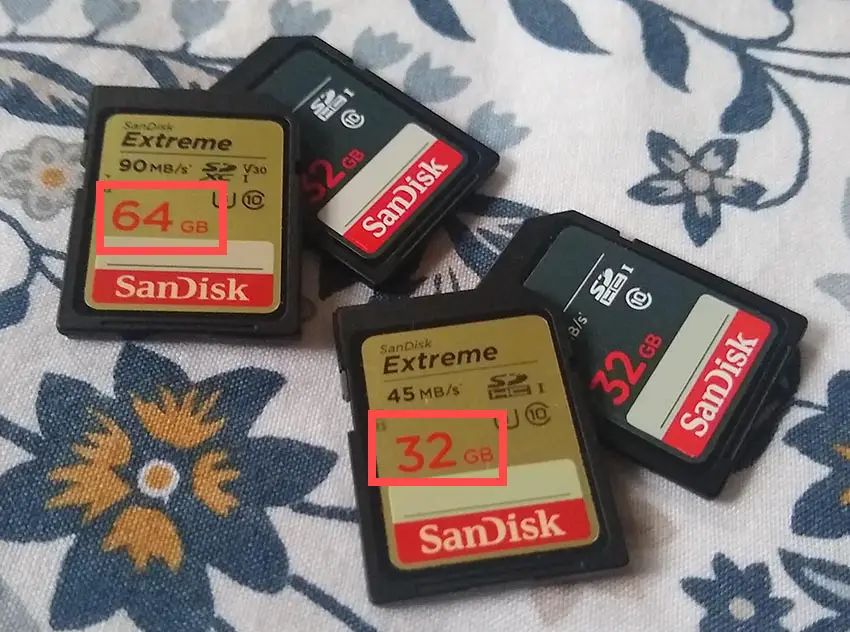
By far the most important specification to consider is the overall capacity of the memory card. You don’t want to be in a situation where you frame a shot, wait for the light, then see an “out of memory” error.
This is particularly the case for 4K video recording, which can use a huge amount of memory in a very short space of time, but is also important for all photographers.
To get an idea of what size memory card you need, you can take a look at the table below, which shows the number of pictures each size of card can fit, depending on the file size of your images. To work out the file size of your images, then my article on how many photos per GB will be helpful.
Number of Photos a Memory Card Can Store, Based on Photo File Size| Megapixels (JPEG / RAW) | File Size | 4GB Memory Card | 8GB Memory Card | 16GB Memory Card | 32GB Memory Card | 64GB Memory Card | 128GB Memory Card | 256GB Memory Card |
|---|---|---|---|---|---|---|---|---|
| 7 (JPEG) | 2 MB | 1856 | 3713 | 7425 | 14850 | 29700 | 59400 | 118800 |
| 14 (JPEG) | 4 MB | 928 | 1856 | 3713 | 7425 | 14850 | 29700 | 59400 |
| 28 (JPEG) | 8 MB | 464 | 928 | 1856 | 3713 | 7425 | 14850 | 29700 |
| 6 (RAW) | 16 MB | 232 | 464 | 928 | 1856 | 3713 | 7425 | 14850 |
| 11 (RAW) | 32 MB | 116 | 232 | 464 | 928 | 1856 | 3713 | 7425 |
| 22 (RAW) | 64 MB | 58 | 116 | 232 | 464 | 928 | 1856 | 3713 |
Read More:
Sequential Write Speed
When you are shooting, photos are first stored to your camera’s internal buffer, then transferred to the memory card and deleted from the buffer to provide space for the next photo.
Camera buffers always operate at a higher speed than memory cards, and have a much lower capacity, meaning that they will always fill up with a short, variable space of time.
This results in the camera being unable to continue when the buffer is full. As an example, an entry level camera might switch from being able to shoot at 6 frames per second (fps) to 1 fps when the buffer hits capacity.
You would be able to shoot at 6 fps once the photo data in the buffer has been transferred to the card and deleted from the buffer.
The speed at which the buffer fills up is determined by how quickly the camera can transfer photos from the buffer to your memory card, with SD cards with a faster write speed increasing the time it takes for the buffer to fill.
This means that the faster the write speed of your memory card, the better.
The sequential write speed in particular is a very useful number, as this refers to the speed at which a continuous series of data can be written to the card, which is what you would experience when shooting.
You might also see random write speed quoted, but this is less relevant than sequential speed.
This speed is not often directly quoted by manufacturer’s, so it pays to look at real-world testing such as that seen here to get a feel for the true numbers for a particular card.
Sequential Read Speed
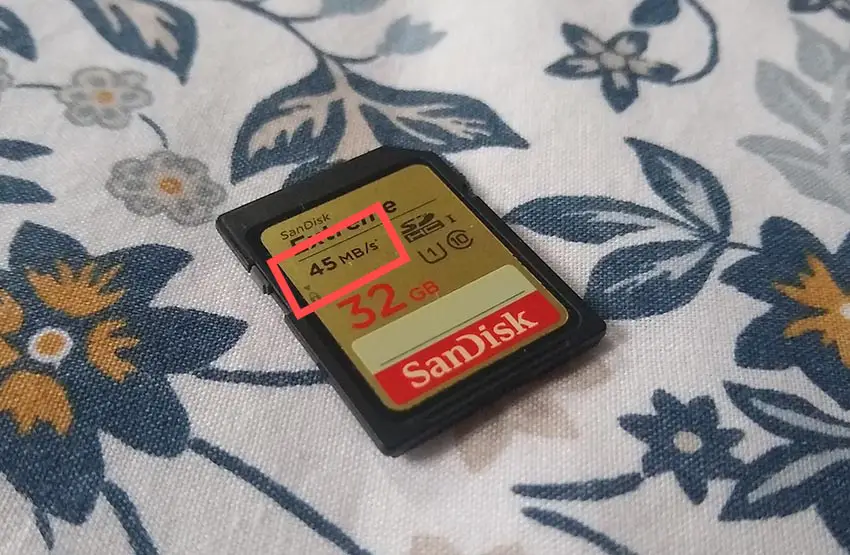
Sequential read speed shows you the transfer rate from the memory card to your computer. This is not as crucial as write speed, but a faster read speed will make a difference for larger memory cards transferring several GB’s of files at once.
If your memory card is below 64GB, then you can effectively ignore read speed, as the difference between the best and worst model is only likely to account for a few tens of seconds when transferring a full card, at most.
Sandisk SD Card Alternatives
There are plenty of other SD card manufacturers that aim their products at photographers and other users, which you may want to consider.
Although Sandisk are the brand leaders when it comes to photography, some of the other brands, such as Sony, are highly regarded for other uses, such as music or game storage, and PNy are preferred by many due to their cheaper price.
PNY Elite Performance
The PNY SD card is generally a very good performer that gets close to the Sandisk Extreme in speeds. PNY do not state a maximum write speed, only that the maximum transfer speed is 95MB/s, which can be taken to be a read speed.
Real world testing puts the maximum write speed for the PNY 32GB Elite Performance SD card at about 70MB/s, which is significantly less than the Sandisk Extreme Pro, but it is also quite a bit cheaper. This is still a very good speed, and if your camera cannot support write speeds above this, you would see no speed difference in using this card over the Sandisk.
To determine the maximum write speed your camera can support, check your user manual. If your manual only gives you the speed class of memory card that it can support, you can use the SD card speed guide earlier in this article to find the actual write speed.
- Pros:
- Max Sequential Write Speed: 69.2 MB/s in real world testing
- Max Sequential Read Speed: 97.9 MB/s in real world testing
- Cheaper than Sandisk Extreme Pro
- Fast performance on all but the newest cameras
- Cons:
- Only five-year warranty
- Slower real-world read and write speeds than Sandisk Extreme Pro
Read More:
Sony M Series
As the only UHS-II card reviewed here, this is potentially a very fast SD card if your camera will support it. You will pay a premium though, with the 64GB model about as expensive as the 128GB Sandisk Extreme Pro.
In real-world tests, the writing speed is not a big leap over the Extreme Pro, although the read speed is significantly faster. If you are shooting 6K or 8K video, such as with the Canon R5, then this is the ideal SD card, but it might be overkill for the average user.
- Pros:
- Max Sequential Write Speed: 99.6 MB/s in real world testing
- Max Sequential Read Speed: 289.2 MB/s in real world testing
- UHS-II card for very fast performance
- Very fast read speed
- Cons:
- Relatively expensive in price per GB
- Your camera must support UHS-II, otherwise the card will operate at much slower speeds
- Write speed is essentially the same as the Sandisk Extreme Pro
Should I go for a Sandisk Extreme or Extreme Pro?
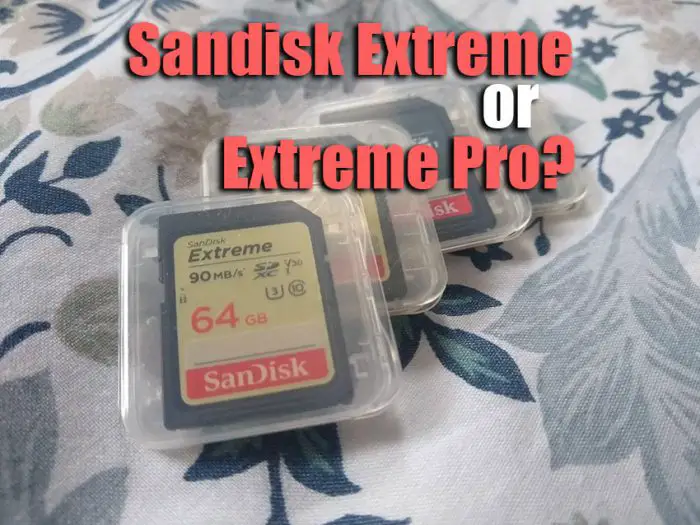
When you are coming to buy a memory card, you have to think not only of the present day use, but also how you will use the card in the coming years.
Memory cards can last a very long time – mine are still working fine after ten years – so it pays to get something that is more future-proofed, even if the cost is slightly higher now.
The SD card format is not going to go away in future cameras, so any cards bought today should also work in tomorrow’s cameras when you upgrade.
But don’t forget that photo file size is also likely to get higher in the future, meaning that a higher capacity card will pay for itself in usefulness.
Therefore, I would recommend getting a high capacity, fast card like the Sandisk Extreme Pro.
If you have to make a trade-off between speed and capacity, then speed is the metric that is likely to matter more overall, so I would recommend prioritizing this over capacity.
 |
|
Read More:
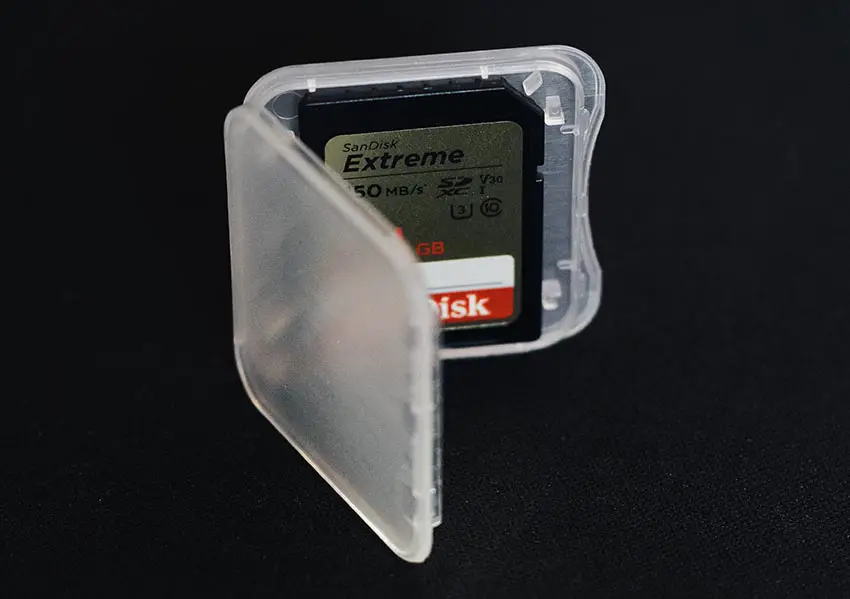
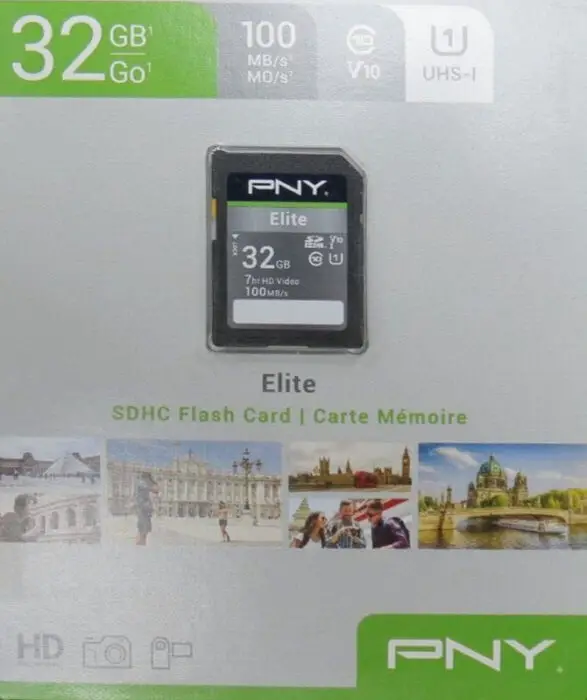
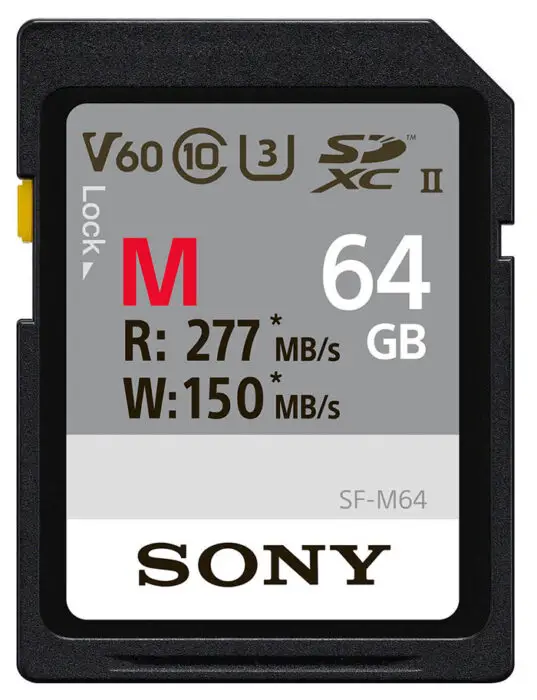



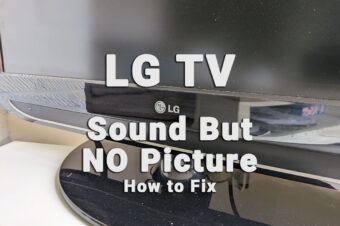


Leave a Reply